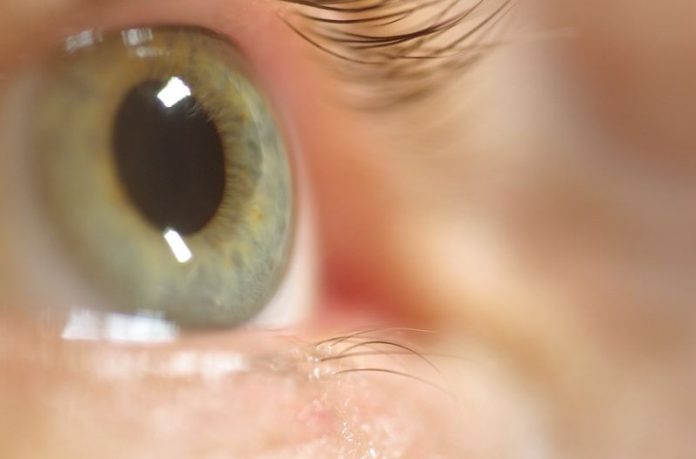With around one in twenty American sufferers, Acne Rosacea is one of the most frequently seen long-term skin disorders.
Typically appearing between the ages of 30 and 50 and affecting more women than men, it is characterized by patchy redness (flushing) and inflammation around the mouth, cheeks, nose, and forehead.
Pus-filled pimples cause these facial symptoms and small, red inflammatory bumps on the surface of the skin along with hundreds of tiny dilated blood vessels just underneath.
As well as the skin effects, around 50 to 60% of Rosacea sufferers also have varying degrees of eye inflammation. This problem known as ocular Rosacea can sometimes occur even before the skin symptoms, but more often the skin changes appear first.
One of the commonest signs of ocular Rosacea is scaly, inflamed eyelid margins but they can range from mild dry eye symptoms all the way up to sight-threatening iritis and keratitis.
Dry eyes: The first sign of ocular Rosacea is usually a persistent gritty burning feeling with the eyes and lid margins becoming bloodshot.
Sufferers become more sensitive to sunlight (photophobia) and usually require dark sunglasses even on the mildest of sunny days. Rosacea reduces tear lubrication by affecting the meibomian glands in the eyelids.
The special oils they produce lubricate the eyes and help stop tears evaporating too quickly. As tears are vital in keeping the front of the eye healthy any abnormal or decreased oil secretions not only produce the dry eye symptoms but also make eyes susceptible to further inflammation and infection.
Rapid early treatment of Rosacea dry eye helps avoid long-term inflammation as well as improving immediate comfort.
Blepharitis: As the tear film and meibomium gland damage persist they produce an inflammatory lid response known as Rosacea blepharitis.
The lid margins become inflamed and crusted and over time they become thickened, often with loss of eyelashes and recurrent sties.
The inflammation can also extend to the outer eye causing the bloodshot pink eye often seen in conjunctivitis. Blepharitis symptoms can be managed by basic hygiene measures such as lid scrubs and warm compresses but the best treatment is to deal with the underlying cause.
Keratitis &Iritis: Although rare, these are two of the more sight threatening complications seen in ocular Rosacea. Keratitis is inflammation of the clear window at the front of the eye (cornea) and urgent treatment is needed to avoid vision-impairing scars.
Symptoms involve blurry vision, sensitivity to light, and often severe eye pain. As the iris (the tissue that gives us our eye color) is inside the eye, iris inflammation can quickly produce marked pain and irreparable damage.
To prevent permanent vision loss, both iris and keratitis are often rapidly treated with high dose topical cortisone.
As ocular Rosacea is a secondary condition it cant be cured but it can be managed by treating the underlying Rosacea. Improving hydration by drinking extra water and avoiding dehydrating stimulants such as alcohol and coffee are lifestyle changes known to help avoid minor Rosacea discomfort.
Long-term antibiotic treatments are often needed for moderate to severe Rosacea although laser skin resurfacing treatments may be helpful in some cases.
Oral antibiotics such as doxycycline and topical antibiotics such as metronidazole are the mainstay of effective Rosacea treatment but may take several months to show improvement in the ocular Rosacea.
Ocular Rosacea is unfortunately a chronic problem that needs constant attention and persistence. Although long-term oral antibiotics do help, prompt local treatment is vital when an attack occurs.
Major flare-ups may need topical cortisone and antibiotics to control them but that need should be rare. With lid scrubs to clean up lashes and eyelids and lubricants to subdue dry eyes, most ocular Rosacea sufferers can be comfortable on a day-to-day basis.
It may be difficult to avoid the red-faced look of acne Rosacea but there is little excuse for suffering the red eyes of ocular Rosacea.

